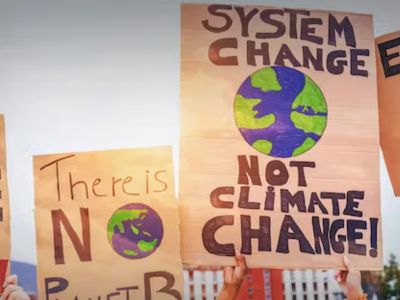“There is no time to wait for others to move first”. These were the words of the UN Secretary General on the 27th July 2023. These words summarize the agency of acting fast to tame the impacts of climate change. In a recent Article we saw how unprecedented heat waves in the Northern Hemisphere have resulted in heat induced death. Rhetorically, experts are referring to a shift from “global warming” to “global boiling” where workers are collapsing under exceeding heat.
Climate with or without climate change has an impact on the quality of life and type of economic activities to undertake. This impact has increased in the last one hundred years attributed to climate change. This has brought to the fore the climate risk reality. Risk is a future uncertainty, it’s a negative or undesirable consequence.
Climate risk refers to the potential for climate to create adverse consequences for human or ecological systems. Climate risk is shaped by three concepts: exposure, vulnerability and hazard. Let’s examine each of these in turns.
Exposure is the presence of human and natural assets in a location where danger is likely to occur. These assets are spread in different places and the more they are concentrated in one area the more the impact. For instance, concentration of built up areas in urban location create more exposure.
Hazard in this context is the climate induced event[s] that may have adverse effects on the exposed assets. This may include heat waves, rise in water levels, prolonged drought or cyclones. Vulnerability is the extent to which the exposed asset can suffer adverse impacts when affected by the hazard[s]. For example, a settlement in low lying flood-prone area is more likely to be affected by rising water levels compared to a settlement on high grounds.
While hazards are directly determined by climate change, vulnerability and exposure depend on socio-economic factors like location of developments in risk prone areas. Today we have more impact due climate risk than a century ago not because of the changing climate per se, but due to increased vulnerability and exposure. Economic growth has meant increased urban concentrations in particular locations or more farm land opened. These are assets that get exposed leading to wider and higher risk and impact.
The authorities in the Northern Hemisphere are responding to the current heat waves by addressing symptoms rather than the causes. For instance, to avoid intense heat during the day, the working time has been shifted to night time in some cases. Emergency services have been heightened to respond to distress calls, fresh drinking water has been guaranteed and fire fighting teams are out putting out forest fires. These are emergency solutions.
Climate risk needs medium-term and long-term solutions. The American Meteorological Society prescribes four ways of managing climate risk. The first one is climate mitigation with efforts to reduce greenhouse gas emissions and use of technologies to absorb carbon. This can be done at all level of society where governments can set rules and regulations, private companies can invest in e-Mobility and individuals change their consumption habits by consuming products that are less carbon intensive in the production process.
Secondly, is adaptation where we increase society’s capacity to cope with climate change. This can vary depending on the sector. For instance, in the case of Agriculture; having a variety of crops to hedge against risks of individual crop failures, integrated [mixed] system where we have livestock combined with crops and aquaculture, planting drought resistant varieties, water conservation and solar irrigation.
Thirdly, is Geo-engineering that involve deliberate, often global-scale manipulation of the climate system intended to counter some impacts of greenhouse gases. Examples include solar radiation management by reflecting incoming Sunshine back to space and Carbon removal or sequestration by extracting carbon dioxide from the air and storing it deep in the ground or Ocean.
Fourth, is the knowledge-based expansion with efforts to learn and understand more about the climate system for proactive risk management. This entails research, observations, scientific assessment and technology development. This can help reveal risks and opportunities to support decision-making.
Currently, the most accessible risk management option in our situation is adaptation. However, for long-term better outcomes, a comprehensive combination of the four responses is better.
Francis Nakomolo Ojambo, Executive Director, Action for Safe Livelihood
fnakomolo@yahoo.com

